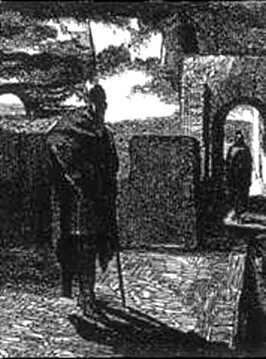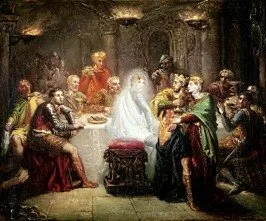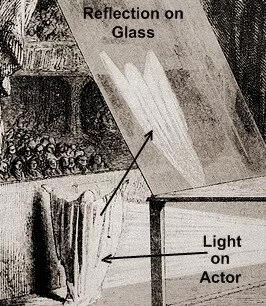 Throughout the history of theatre, and into film history, ghosts and spirits have been used for a variety of purposes. They represent the supernatural and unknown. They seek revenge or give guidance. They are a formidable enemy or an ally with unearthly powers.
Throughout the history of theatre, and into film history, ghosts and spirits have been used for a variety of purposes. They represent the supernatural and unknown. They seek revenge or give guidance. They are a formidable enemy or an ally with unearthly powers.
Early Ghosts of Theatre
Ghosts have been a part of theatre nearly as long as theatre has existed. Early on, ghosts were inhuman-like. They were forces, incapable of exhibiting complex human emotions or thought processes.
The Roman philosopher, Seneca, included ghosts in his plays. His ghosts’ sole purpose was to seek revenge for things that had happened to them while they were alive. In medieval theatre, the role of the ghost changed. Instead of revenge, they sought favors. A more humanized ghost became popular in plays from the time of Shakespeare to present.
 William Shakespeare included numerous ghosts or spirits in his plays, including the ghost of Caesar in Julius Caesar and the ghosts of Edward Prince of Wales and Henry VI in Richard III. He often used ghosts to represent the struggle within the psyche of his characters. In Macbeth, the ghost of Banquo appears to Macbeth, and only Macbeth, as he struggles with his ruthless, evil desire to achieve power. The suppressed part of Macbeth’s subconscious is brought into the open when the ghost of Banquo appears. In Hamlet, the ghost of Hamlet’s father is a representative of the supernatural forces that are swirling over Denmark after King Hamlet’s murder. (“Something is rotten in the state of Denmark” 1.4.90.) His appearance in the form of a ghost and message to Prince Hamlet is the supernatural’s attempt to re-establish the natural order of Denmark’s hierarchy.
William Shakespeare included numerous ghosts or spirits in his plays, including the ghost of Caesar in Julius Caesar and the ghosts of Edward Prince of Wales and Henry VI in Richard III. He often used ghosts to represent the struggle within the psyche of his characters. In Macbeth, the ghost of Banquo appears to Macbeth, and only Macbeth, as he struggles with his ruthless, evil desire to achieve power. The suppressed part of Macbeth’s subconscious is brought into the open when the ghost of Banquo appears. In Hamlet, the ghost of Hamlet’s father is a representative of the supernatural forces that are swirling over Denmark after King Hamlet’s murder. (“Something is rotten in the state of Denmark” 1.4.90.) His appearance in the form of a ghost and message to Prince Hamlet is the supernatural’s attempt to re-establish the natural order of Denmark’s hierarchy.
(Colored image pictured here: The Shakespearian ghost of theatre, Banquo, appears in the open.)
 Ghosts in Theater Productions
Ghosts in Theater Productions
It is much easier to include a ghost in a theatre production through writing, though, than it is to portray a ghost on stage if it is to look believable. The Pepper’s Ghost technique is an illusion used in theatre since the 1860’s that makes objects, including actors playing ghosts, appear transparent. It can make objects appear or disappear, and it can give off the illusion that two objects have morphed together. In order for the trick to work, there must be two rooms, a main room and a mirror room that the viewer is unable to see. Using lighting tricks and a sheet of glass, objects in the mirror room appear transparent in the mail room if there is light in the mirror room. When the mirror room is darkened, the image in the main room disappears. This technique has also been frequently used in attractions at amusement parks, including the Twilight Zone Tower of Terror in Disney World.
 Ghosts in Film
Ghosts in Film
Today, ghosts from theater have made their way into many movies and television shows. When one realizes just how many movies, TV shows and plays have been made that include ghosts, there is no doubt that a strong belief in the afterlife continues to permeate our culture.
More to See:
Theatre Ghost Picture
Ghost Movies
List of Ghost Movies

